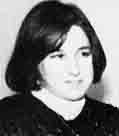
According to Genesis 49:29–31, Abraham, Isaac, Jacob, Sarah, Rebecca and Leah are all buried in one place, in the cave of Machpelah in Hebron. A massive enclosure built by Herod the Great still surrounds the traditional site of Machpelah. In “Patriarchal Burial Site Explored for First Time in 700 Years,” Nancy Miller examines the mysteries and legends that have grown up around the ancient burial field. Miller also describes the efforts to explore the caves in the 19th and 20th centuries, including the most recent report, in 1967, of a young girl who was lowered down a narrow shaft on a rope by General Moshe Dayan.
Nancy Miller, who from 1979 to 1980 was on the editorial staff of BAR, lives in New York City where until recently she served as editor of Congress Monthly, the magazine of the American Jewish Congress. Now a freelance writer, Miller has published in numerous magazines and newspapers.

Miller also notes in her article similarities between the Herodian architecture of the Machpelah enclosure and the Temple Mount. In “Was the Site of the Jerusalem Temple Originally a Cemetery?” Rivka Gonen proposes that the Temple Mount and the Machpelah may share an even earlier similarity, namely that they were both originally the sites of Middle Bronze Age I cemeteries (2200 to 2000 B.C.). To support this startling suggestion, Gonen provides an abundance of clues from ancient literature as well as modern archaeological evidence.
Gonen, whose family has lived in Israel for six generations, received her Ph.D. in archaeology from Hebrew University in 1979.
That same year, she headed an excavation of a Middle Bronze Age cemetery in Efrat, an ancient settlement south of Jerusalem. Senior lecturer in archaeology and ancient cultures at Bezalel Academy of Art and Design in Jerusalem, Gonen is currently on leave-of-absence and living in London. She has just finished a book on Late Bronze Age Canaanite burial patterns and is working on a study of the ten lost tribes of Israel.

Sprinkled throughout the Central Negev lie the ruins of many ancient fortresses. Where substantial limestone fortifications once protected soldiers stationed in the wilderness, only traces of casemate walls remain. Israeli archaeologist Rudolph Cohen has identified among these ruins more than 20 that fit three basic fortress designs: oval, square and rectangular. Cohen contends that the structural similarities of the fortresses indicate they were all part of a unified network, built within a period of about 50 years in the tenth century B.C. by one ruler—King Solomon. In “The Fortresses King Solomon Built to Protect His Southern Border,” Cohen reinforces this theory with studies of pottery and of buildings connected with the fortresses.
Rudolph Cohen has excavated so extensively in the Negev that fellow Israelis sometimes call him “King of the South.” Since 1978, he has served as head of the Israeli Archaeological Rescue Survey team for the Negev, working in areas that would soon be cleared for airfields as troops withdrew from Sinai. Last September, Cohen was elected chairman of the Executive Committee of the Archaeological Survey of Israel. Cohen’s most recent contribution to BAR is “The Mysterious MB I People,” BAR 09:04.

Chapter five of the Book of Daniel tells us that the Babylonian kingdom ruled by Belshazzar would fall to the Persians. But who was Belshazzar? Until his name appeared in cuneiform inscriptions found at Babylon, many scholars doubted his existence. Nabonidus, not Belshazzar, was supposed to be the last king of Babylonia before it fell to the Persians. In “Daniel and Belshazzar in History,” Alan R. Millard retells the story of Belshazzar and cites new evidence to support the existence of a Babylonian ruler named Belshazzar and to explain a hitherto puzzling aspect of the story: Why did Belshazzar offer Daniel the “third highest place in the kingdom”?
Millard is Rankin Senior Lecturer in Hebrew and Ancient Semitic Languages at the University of Liverpool in England. He has excavated at Arpad, Petra, Nimrud and Qadesh. Millard also served as assistant keeper of the Department of Western Asiatic Antiquities at the British Museum, and as librarian of the Tyndale Library in Cambridge. His publications include Treasures from Bible Times, which is reviewed in Books in Brief.
Also reviewed in this issue is a volume that art historian Jo Milgrom hails as a leader among books that illuminate scripture with art and artifacts of the Near East. Milgrom’s review of The Symbolism of the Biblical World by Othmar Keel, in Books in Brief, includes a few examples of the book’s 556 illustrations.

